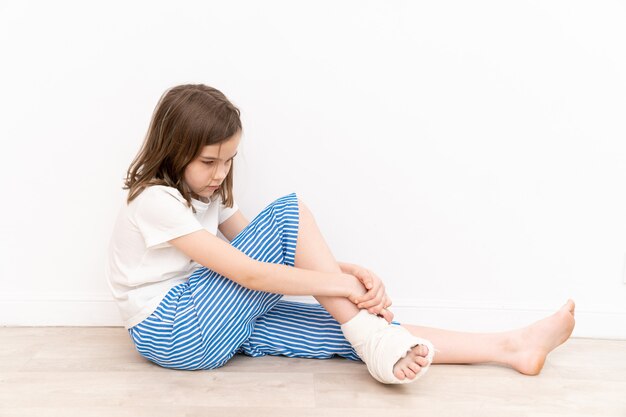Calcaneal apophysitis, commonly known as Sever’s disease, is a painful condition affecting the heel of growing children and adolescents. It typically occurs during periods of rapid growth, when the heel bone (calcaneus) is still developing and is more vulnerable to stress and injury. Understanding the symptoms, causes, and available treatments is crucial for parents and caregivers to effectively manage this condition.
Symptoms of Calcaneal Apophysitis
The symptoms of calcaneal apophysitis can vary but generally include:
- Heel Pain: The most prominent symptom is pain at the back or bottom of the heel, which may worsen with activity. Children often report a sharp or aching pain that can interfere with daily activities.
- Tenderness: The heel may be tender to the touch, and pressing on the affected area can elicit discomfort.
- Swelling: Mild swelling around the heel may be present, particularly after physical activity.
- Stiffness: Some children may experience stiffness in the heel, especially in the morning or after periods of inactivity.
- Altered Gait: Children may change their walking or running style to avoid pain, which can lead to compensatory issues in other parts of the foot or leg.
Causes of Calcaneal Apophysitis
Calcaneal apophysitis is primarily caused by repetitive stress on the heel during periods of rapid growth. Several factors can contribute to the development of this condition:
- Physical Activity: High-impact sports or activities that involve running, jumping, or sudden changes in direction can place extra strain on the heel.
- Growth Spurts: During periods of rapid growth, the calcaneus may grow faster than the surrounding muscles and tendons, leading to tightness and increased stress on the heel.
- Poor Footwear: Shoes that lack proper cushioning or support can exacerbate the stress on the heel, making it more susceptible to injury.
- Flat Feet or High Arches: Abnormal foot mechanics, such as flat feet or high arches, can alter the distribution of forces on the heel during physical activities.
- Tight Muscles: Tightness in the calf muscles or Achilles tendon can increase strain on the heel, contributing to the development of calcaneal apophysitis.
Treatments for Calcaneal Apophysitis
While calcaneal apophysitis can be painful, it is generally a self-limiting condition that resolves with proper management. Treatment options include:
- Rest: Reducing physical activity is crucial to allow the heel to heal. This may involve taking a break from sports or modifying activities that exacerbate pain.
- Ice Therapy: Applying ice to the affected area for 15-20 minutes several times a day can help reduce swelling and alleviate pain.
- Stretching and Strengthening Exercises: Gentle stretching of the calf muscles and Achilles tendon can relieve tightness. Strengthening exercises for the foot and ankle may also be beneficial.
- Footwear Modifications: Wearing shoes with adequate support and cushioning is essential. Custom orthotics or insoles may be recommended to provide additional support.
- Over-the-Counter Pain Relief: Nonsteroidal anti-inflammatory drugs (NSAIDs), such as ibuprofen or acetaminophen, can help manage pain and reduce inflammation.
- Physical Therapy: In some cases, a physical therapist may develop a tailored exercise program to address muscle imbalances and improve flexibility.
- Activity Modification: Engaging in low-impact activities, such as swimming or cycling, can help maintain fitness without placing excessive stress on the heel.
Calcaneal apophysitis is a common condition among active children and adolescents, but it can be effectively managed with appropriate care. Recognizing the symptoms early and implementing treatment strategies can help alleviate pain and support healing. If heel pain persists or worsens, consulting a healthcare professional is essential to rule out other potential issues and receive tailored treatment recommendations. With proper care, most children can return to their normal activities and sports without long-term complications.










